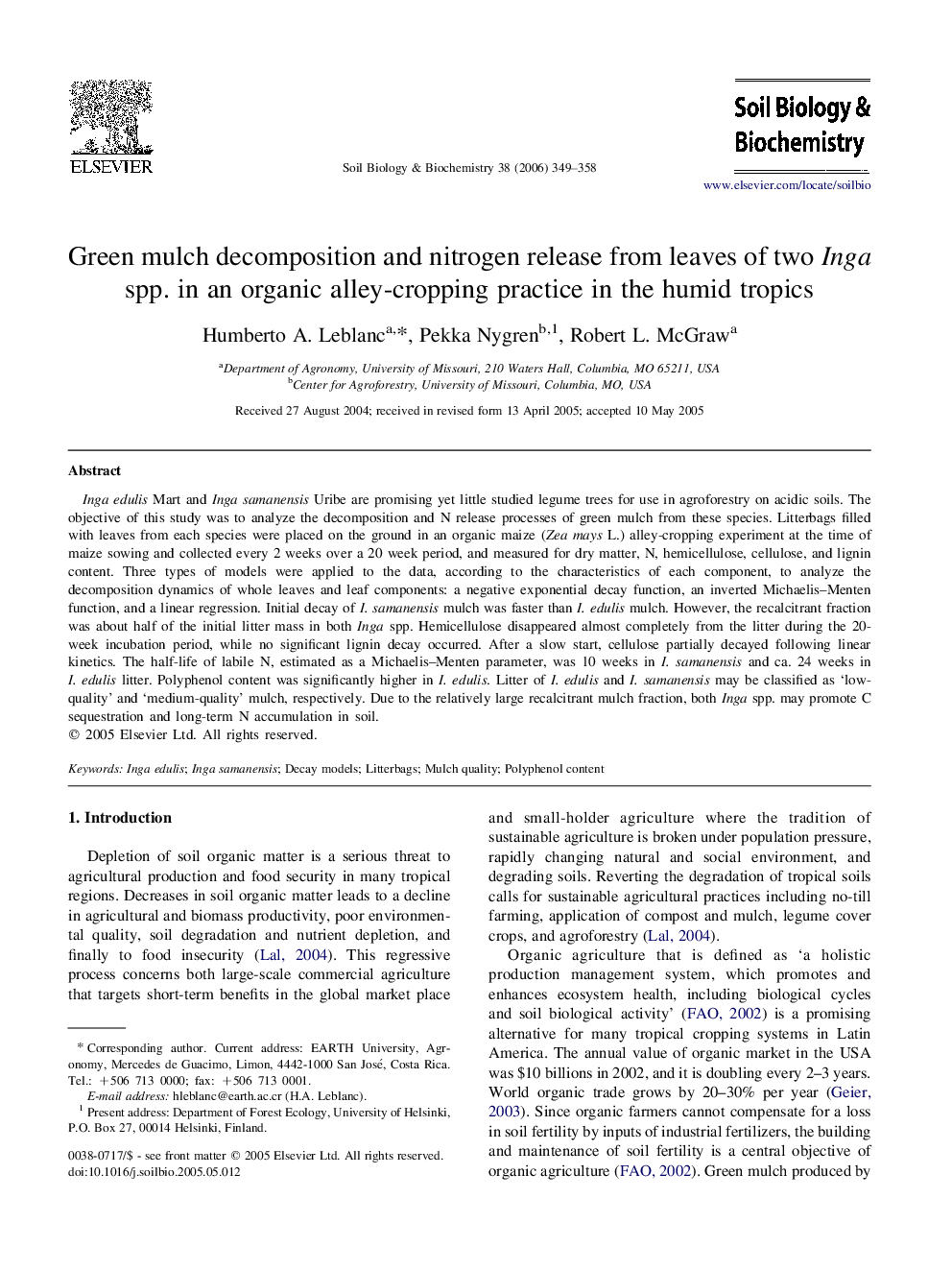| Article ID | Journal | Published Year | Pages | File Type |
|---|---|---|---|---|
| 2026786 | Soil Biology and Biochemistry | 2006 | 10 Pages |
Inga edulis Mart and Inga samanensis Uribe are promising yet little studied legume trees for use in agroforestry on acidic soils. The objective of this study was to analyze the decomposition and N release processes of green mulch from these species. Litterbags filled with leaves from each species were placed on the ground in an organic maize (Zea mays L.) alley-cropping experiment at the time of maize sowing and collected every 2 weeks over a 20 week period, and measured for dry matter, N, hemicellulose, cellulose, and lignin content. Three types of models were applied to the data, according to the characteristics of each component, to analyze the decomposition dynamics of whole leaves and leaf components: a negative exponential decay function, an inverted Michaelis–Menten function, and a linear regression. Initial decay of I. samanensis mulch was faster than I. edulis mulch. However, the recalcitrant fraction was about half of the initial litter mass in both Inga spp. Hemicellulose disappeared almost completely from the litter during the 20-week incubation period, while no significant lignin decay occurred. After a slow start, cellulose partially decayed following linear kinetics. The half-life of labile N, estimated as a Michaelis–Menten parameter, was 10 weeks in I. samanensis and ca. 24 weeks in I. edulis litter. Polyphenol content was significantly higher in I. edulis. Litter of I. edulis and I. samanensis may be classified as ‘low-quality’ and ‘medium-quality’ mulch, respectively. Due to the relatively large recalcitrant mulch fraction, both Inga spp. may promote C sequestration and long-term N accumulation in soil.
